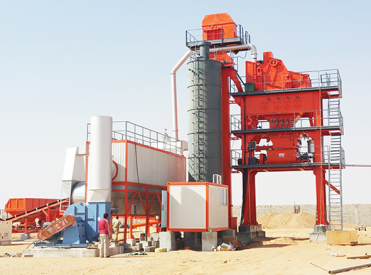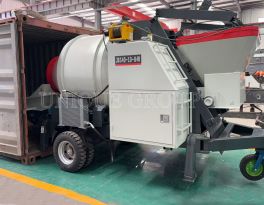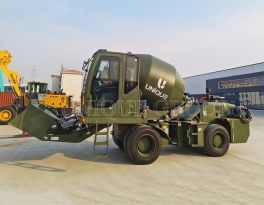
Self-loading concrete mixer truck: a revolutionary innovation in the field of engineering construction equipment
Against the backdrop of the continuous deepening of global infrastructure construction and the rising demand for refined engineering construction, self loading concrete mixer truck are becoming an important innovative force in the field of engineering construction equipment with their highly integrated and intelligent technical characteristics. Through innovative engineering design and technology integration, this equipment effectively solves the industry pain points of low efficiency, high cost, and poor adaptability of traditional concrete production and transportation modes, providing a new solution for modern engineering construction.
Multi-system integrated design to achieve efficient operation throughout the entire process
The concrete self-loading truck adopts a modular integrated design, which organically integrates the aggregate feeding system, precise metering system, mixing system, transportation system, and intelligent unloading system. Its automatic feeding system uses a robotic arm to coordinate the loading bucket conveying device, and realizes automated operation through electronic weighing. It can accurately grab sand and gravel aggregates, and use sensors for dynamic metering based on preset mix ratio parameters. The aggregate metering error is controlled within ±2%, which is significantly better than the industry standard.
The mixing unit is equipped with a mixing tank and an optimized spiral mixing blade. The variable frequency speed regulation technology can achieve an adjustable mixing speed of 13-21rpm, ensuring that concrete with different slumps and different aggregate particle sizes can achieve uniform mixing within 90-120 seconds, effectively guaranteeing key performance indicators such as concrete strength and durability. Taking the UK4 concrete self-loading vehicle of Zhengzhou Unique Industrial Equipment Co., Ltd. as an example, its hydraulic unloading system adopts a large-angle tilt design, with a unloading speed of up to 1.2m³/min, and a unloading residual rate of less than 0.5%, which greatly improves construction efficiency.
Excellent maneuverability, breaking through the limitations of complex working conditions
Based on the optimized design of the engineering vehicle chassis, the concrete self-loading vehicle has excellent terrain adaptability. The all-wheel drive system combined with the differential locking device enables it to maintain stable driving on muddy, rugged and other unpaved roads, and the climbing ability can reach 35°. The vehicle has a minimum turning radius of only 5.5 meters, and can operate flexibly in narrow alleys, old urban areas and other space-constrained areas, effectively solving the problems of difficult transfer of traditional concrete mixing plants and difficulty of transport vehicles to reach the construction site.
In the Amazon rainforest hydro power station construction project in South America, the UK4 concrete self-loading vehicle of Zhengzhou Unique Industrial Equipment Co., Ltd. successfully crossed the swamp wetlands and steep slopes with its four-wheel independent suspension system and high ground clearance design, and completed an average of 120m³ of concrete supply per day, which is 40% more efficient than traditional equipment. In addition, the equipment is equipped with a quick tire changing device and emergency steering system, which can complete tire replacement or steering mode switching within 30 minutes in an emergency situation to ensure construction continuity.
Intelligent technology empowers and promotes the upgrade of construction management
The concrete self-loading mixer deeply integrates the Internet of Things, big data and artificial intelligence technologies to build an intelligent construction management system. The built-in intelligent control system of the equipment collects data through multiple sensors, monitors 12 types of core data such as mixing parameters, fuel consumption, equipment operation status, etc. in real time, and uploads them to the cloud management platform through the 4G/5G communication module. The fault diagnosis system based on AI algorithm can realize automatic identification and early warning of more than 90% common faults, and the fault response time is shortened to less than 5 minutes.
The remote control function supports operators to remotely adjust the mix ratio, start the mixing program and monitor the unloading process through tablet computers or mobile phone APP, effectively improving the efficiency of construction management. The BIM collaborative management system equipped with the UK3.5 self-loading vehicle launched by Zhengzhou Unique Industrial Equipment Co., Ltd. can be seamlessly connected with the engineering design model to achieve precise control of the concrete pouring volume, reduce the material loss rate by 15%, and further optimize the construction cost.
Multiple scene applications to release the value potential of equipment
Concrete self-loading vehicles have shown wide applicability in municipal engineering, transportation infrastructure, energy development and other fields. In municipal road maintenance projects, its rapid transition and instant production characteristics can significantly reduce the road closure time and reduce the impact of construction on urban traffic; in the construction of rural revitalization infrastructure, the equipment can use local materials to complete concrete preparation, effectively solving the problem of material transportation in remote areas.
As global engineering construction develops towards intelligence and greenness, self-loading concrete trucks, as representatives of a new generation of construction equipment, are reshaping the industry ecosystem with their technological innovation advantages. In the future, with the further integration of new energy technologies and unmanned driving technologies, self-loading concrete trucks are expected to achieve greater technological breakthroughs and continue to promote high-quality development in the field of global engineering construction.
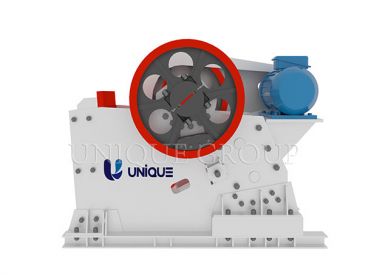
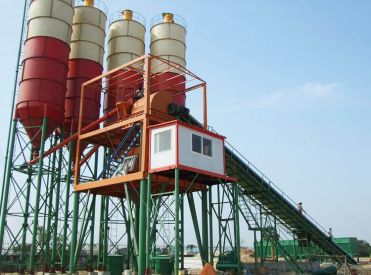
.jpg)
